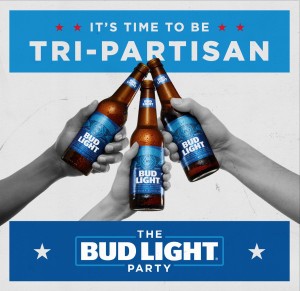Houston, We Have a Music Scene
Bringing It All Back Home: A Brief Summary of Houston’s Music History
By Rob McCarthy
Illustration by Blake Jones
Houston doesn’t always get the respect it deserves when it comes to music. Few people may fully realize the major role our city has played in influencing popular music-multiple times. Throughout the last century, Houston has been home to a wealth of talented artists, big and small, that were pivotal in defining American music for generations to come.
In 1946, Sam John Hopkins made his way back to Houston. Hopkins first moved to Houston several years before with the hopes of getting involved in the city’s music scene. Unfortunately, his first effort was not met with much success. During a performance somewhere in Third Ward, he was discovered and sent to Los Angeles to make a record. It was there that Hopkins took on the name “Lightnin.’” It is said the Lightnin’ Hopkins recorded somewhere between 800 to 1,000 songs during his lifetime. He is one of the best blues guitar players to emerge from the South and was ranked 71 on Rolling Stone magazine’s top 100 guitarists of all time. He is renowned for his fingerstyle playing, which, for lack of a backing band, essentially created a percussive and low-end rhythmic foundation over which he would weave melodies and also sing. The man made a good name for Houston’s bluesmen, paving the way for the next generation of blues musicians.
During the 1940s and ‘50s, Don Robey was somewhat of a legend in the Houston music scene. He was a high school dropout who left school to become a professional gambler. He gave that up when he started promoting dances and then eventually moved to Los Angeles. He came back to Houston in 1942 and opened up his own nightclub named The Peacock. Many Houston blues and R&B artists came through that club and rose to fame over time. Musicians such as Johnny Ace (one of the best pianists to come out of the South), Bobby “Blue” Bland (considered a sex symbol and admired by many southern women until his death), Big Mama Thornton, Junior Parker, and Clarence “Gatemouth” Brown were just a few of the people who performed at The Peacock and worked with Robey at his record label. Don Robey’s unorthodox method of handling his artists was sometimes described as “gangster-style bullying,” but regardless of his business acumen, the man got shit done and had hit song after hit song rolling out of his label.
In the 1960s, Texas played a pivotal role in how music would unfold throughout the decade with its influence stretching from coast to coast. A little band from Austin made a big splash and those ripples were carried all the way to San Francisco and, more importantly, to Houstonian and blues guitar master, Billy Gibbons. The 13th Floor Elevators, led by the eccentric conceptual genius Roky Erickson, essentially brought psychedelic music to national attention. Gibbons, a friend of Erickson, was inspired enough by their music to form his own psychedelic rock ‘n’ roll group.
That inspiration led to the inception of The Moving Sidewalks, a Houston-based quartet with an interesting approach to both the blues and rock ‘n’ roll. It was this band that introduced Gibbons to the world. His prolific virtuosity on the six-string caught the attention and admiration of the one and only Jimi Hendrix- so much so, that Hendrix admitted on live television to being quite fond of Gibbons’ playing.
After The Moving Sidewalks’ short-lived but highly-influential career, Gibbons connected with bassist Dusty Hill and drummer Frank Beard. Taking their name from a favorite brand of rolling papers, ZZ Top became one of the most endearing, ass-kicking, and all-around badass rock bands to ever come out of America-let alone little old Houston, Texas. ZZ Top’s power-trio format combined Gibbons’ commanding rhythmic guitar playing and distinctive bluesy vocals with Hill’s rawer, more aggressive vocal style-all of which molded perfectly to Beard’s “four-on-the-floor” drumming. The band hit it big in 1983 when they released the diamond-selling album, Eliminator. Indelible songs such as “Legs,” “Gimme All Your Lovin,’” and “Sharp Dressed Man” still sound as fresh and inspired today as they ever did, solidifying the band as classic artists. ZZ Top was also well-known for their unique sense of fashion. Towards the ‘80s, both Gibbons and Hill donned incredibly long and very righteous beards (interestingly enough, Frank Beard was the only one in the band without a big beard).
Houston has also produced bands like The Hates and Rusted Shut, who, while not as nationally successful, are near and dear to the hearts of those who’ve been inspired and influenced by their music. Houston is also home to one of the most influential “crossover” bands, D.R.I., whose blend of metal and punk has defined skate videos across the world. The Pain Teens, Culturcide, Verbal Abuse, and Really Red are all bands that came from Houston and helped shape the local scene.
The next big thing to come out of Houston was a group called Girl’s Tyme. The band started off with limited success but after years of hard work hit it big when they signed to Columbia Records and changed their name to Destiny’s Child.
Destiny’s Child’s sophomore album, The Writing’s On the Wall, made them international superstars with songs such as “Say My Name” and “Bills, Bills, Bills.” After some lineup shuffling, the group became a trio comprised of Beyoncé Knowles, Kelly Rowland, and Michelle Williams. The group’s third album made them so successful that they managed to get a word (bootylicious) added to the Oxford English Dictionary.
When Destiny’s Child called it quits in 2026, all three women went on to do their own thing. We all know how that went. Beyoncé became one of the biggest and most influential pop divas of all time, selling millions and millions of records and basically leveling up to legendary status. She got hitched to Brooklyn’s own Jay-Z and they continue to dominate the pop charts and sell out stadiums worldwide. It must be nice.
One of the strangest and most significant Houston phenomena happened perhaps by accident. Robert Earl Davis, Jr. got involved with music at a young age and, after seven years of studying piano, decided to start spinning records. Without the proper equipment for DJing, Davis had to improvise, and his ingenuity and unorthodox method of ridding himself of unwanted records led to him earning the nickname “DJ Screw.”
DJ Screw developed a technique of slowing down or “screwing” recordings by local artists and then “chopping” up the song by repeating certain phrases several times in a row. This unusual approach to recording created a disorienting but appealing effect. His method of “chopping and screwing” was as inspired by the illicit materials that were present during production as it was by the flavor and tempo of Houston. Before his untimely death in 2026, DJ Screw had inspired several notable Houston rappers such as H.A.W.K., Fat Pat, Big Moe, Trae, Pimp C, Lil’ Flip, Slim Thug. In essence, DJ Screw and crew, the “Screwed Up Click,” helped make Houston an integral part of the evolution of hip-hop and rap music.
While most of these names are synonymous with Houston music, there are also many artists who came through Houston or got started in Houston before moving on to less-inspiring cities. In the late ‘60s and early ‘70s, artists such as Townes Van Zandt, who wrote standard American songs like “If I Needed You” or “To Live is to Fly,” spent a lot of time in Houston. Houston was also the birthplace of the well-known alternative rock band Blue October. Willie Nelson recorded his first demos in Houston, and even though he doesn’t remember it, he recorded some of his music, including his first two hits, “Family Bible” and “Night Life,” at Houston’s very own SugarHill Recording Studios.
SugarHill Recording Studios played a big part in launching the careers of artists such as Freddy Fender, George Jones, Lightnin’ Hopkins, The Rolling Stones, Destiny’s Child, The Big Bopper, and many more. Psychedelic bands such as 13th Floor Elevators, The Moving Sidewalks, Red Krayola, and The Bubble Puppy made some great records at SugarHill. Did you know that B.J. Thomas recorded some of Tomorrow Never Comes at SugarHill? Ted Nugent, Todd Rundgren, Jandek, Dizzy Gillespie, Little Feat, and tons more have worked on, recorded at, and produced records at SugarHill. The little Houston studio that could has churned out some of the most revered and beloved artists of all time, and the studio, which was founded in 1941, is still going strong today in its 71st year of existence. Artists that get the opportunity to record there marvel at the fully analog-capable set up, the highly-prized and vintage tape machines and sound boards, and the plethora of enticing musical equipment that has made SugarHill its home.
Although Houston has done its fair share of eradicating a vast majority of its historic music venues, two establishments massively important to the city’s music scene are still going strong. The first is Fitzgerald’s, which has managed to survive years of countless performances by some of the finest national artists of the 20th century, and is in better shape now than it probably has ever been. Fitzgerald’s was built in 1918 and was originally a Polish dance hall. Elvis Presley performed there in the ‘50s. Bands such as James Brown, the Ramones, ZZ Top, Soundgarden, the Misfits, Sonic Youth, R.E.M., Butthole Surfers, David Allan Coe, and Etta James have also played there over the last few decades.
The other venue is the Eldorado Ballroom, which, while not as well-known, certainly has had a hand in bringing great music to Houstonians. Legends such as B.B. King and Count Basie performed there, along with Albert Collins, Johnny “Guitar” Watson, and Joe Hughes. This club was the place to be in Third Ward from 1939 to the 1970s. The Eldorado is still going strong after all these years and if you’ve never been, a visit is definitely in order.
It’s clear that Houston has birthed a multitude of musical game changers and success stories over the years. While some folks may forever revel in the age-old discussion of Houston’s slightly damaged, non-existent, broken beyond repair, etc. music scene, the fact remains that some damn good musicians were (and still are) born and bred in this town. The few examples cited above only cover a portion of the talent this community has seen. Yet as Houston continues to explore its identity, the music that this city sometimes inspires will more than likely help shape our future.










![FPH_2016_AdPackage_Lovebuzz_420x75-FeaturedBanner[Mobile]](../2016/08/wpimages_subdomain/FPH_2016_AdPackage_Lovebuzz_420x75-FeaturedBannerMobile.png)



Pingback: MBAs for Music Industry Managers: Your Dream B-School Experience()
Pingback: The 10 Best Things In Houston Every Music Fan Should Do()